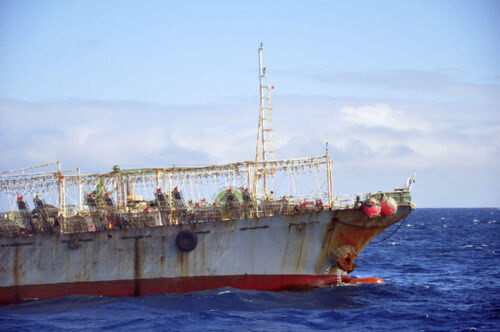Way out in the middle of the Pacific Ocean, on a sanctuary off limits to fishing activity, scientists are learning the habits of marine life uninterrupted by humans. In a recent study, they’ve found that sharks commute in and out of the lagoons of Palmyra on a daily basis. Rush hour according to the researchers appears to hover around sunset, which leads me to wonder if they’re not headed for a dinner time buffet.
Palmyra is a tiny atoll, just 700 acres of land at high tide, and one of seven uninhabited islands and atolls that make up the Pacific Remote Island Marine National Monument. Roughly 1,000 miles from Hawaii, the monument became the largest marine sanctuary in the world in 2014 when President Barack Obama extended its boundaries to include a 200 mile perimeter of protected ocean around three of the sites. The deep waters around the sanctuary are frequently visited by longliners and purse seiners fishing for tuna.
Our research partner Doug McCauley has been working on Palmyra for many years. Protected from the open ocean, the atoll’s lagoons provide refuge for many marine species, including mobile, ocean roamers such as turtles, manta rays and sharks. But only recently have McCauley and his colleagues learned about the heavy flow of shark traffic into one lagoon via a deep water channel created by the military during WWII. Their study was published in the Journal of Experimental Marine Biology and Ecology.
Interested to learn how the lagoons of Palmyra were being used, the researchers developed a system to capture images of marine animal traffic as it passed through a deep water channel—like the cameras at amusement parks that shoot a steady stream of photos as roller coasters whiz by. Their cameras, however, were not optical cameras; they were acoustic cameras originally designed for the U.S. Navy. Using sonar technology or pulsed sound wavelengths the cameras produced fast-frame, detailed imaging even in low-light, turbid waters. Over a month-long period, McCauley and his team monitored marine animal traffic for 443 hours and captured 1,196 shark observations.
“This matters,” McCauley said in a press release. “It’s important to know for how we deal with sharks and to determine their behavior patterns, because sharks are in trouble worldwide. We need to be thinking about new tools and new technologies for studying them, and this one — which wasn’t designed for scientific applications — worked very well.”


